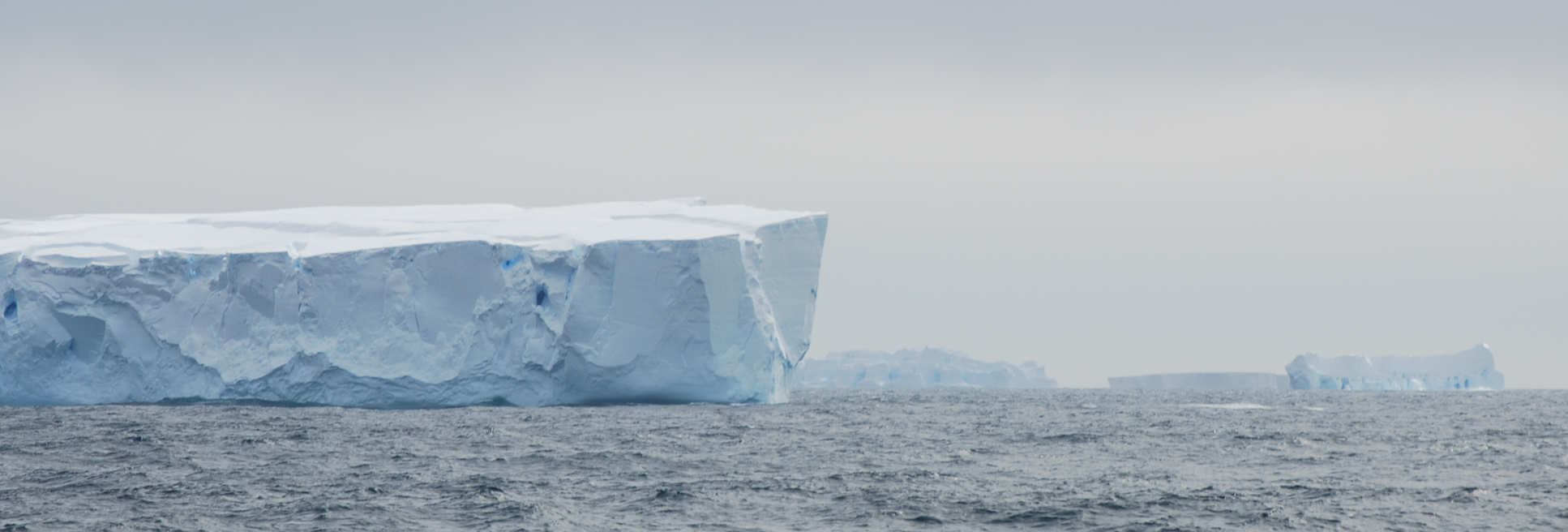

Imperial experts have predicted that sustained Antarctic warming of just 2°C could melt the largest ice sheet on earth.
New research on Antarctic sediment layers has shown that the East Antarctic Ice Sheet (EAIS), also known as Antarctica’s ‘sleeping giant’, retreated during extended warm periods in the past - when temperatures were like those predicted for this century.
The international research team, led by Dr David Wilson of Imperial College
By building a picture of how the ice sheet has grown and shrunk as temperatures have fluctuated, we can predict the sleeping giant’s response to future warming. Dr David Wilson Department of Earth Science & Engineering
London (now at UCL), used evidence from a previous time in Earth’s history, the late Pleistocene, to inform how the EIAS might react to a warming climate.
Scientists had previously focused on the West Antarctic Ice Sheet, which predominantly sits on land below sea level, and contributes most of Antarctica’s ice melt today.
In contrast, the EAIS mostly lies on land above sea level. It is the largest ice sheet on Earth, at around 60 times the area of the UK. The sleeping giant contains around half of Earth’s freshwater but is assumed to be less sensitive to a warming climate.
However, the new study, published today in Nature, suggests that 2°C warming in Antarctica, if sustained over a couple of millennia, would lead to melting in an area of the EAIS that lies below sea level. This has implications for rising sea levels and highlights global warming’s threat to human civilisation.
Dr Wilson, from Imperial’s Department of Earth Science & Engineering, said: “Studying ice sheet behaviour in the geological past can inform us about future changes. By building a picture of how the ice sheet has grown and shrunk as temperatures have fluctuated, we can predict the sleeping giant’s response to future warming.”
The researchers studied the Wilkes Subglacial Basin, one of three major areas where the EAIS sits on land that lies below sea level. If all the ice in this basin were to melt, global sea level would rise by up to four metres.
We must decarbonise our economy to keep global warming below 1.5 to two degrees, as targeted by the Paris Agreement, and to avoid major sea level rise in the future. Professor Tina van de Flierdt Department of Earth Science & Engineering
Glaciers, which come from ice sheets, grind up rocks on the continent, and then transport this sediment to the nearby Southern Ocean, leaving behind a record of past erosion by the ice sheet.
To understand how warming affected the ice sheet in the past, the team chemically analysed layers of sediment from the ocean floor that originated from the Wilkes Subglacial Basin. They were collected during an expedition of the Integrated Ocean Drilling Program.
Clues on the sea floor
The researchers studied sediment layers that had settled on the sea floor during four previous warm intervals that occurred between ice ages (interglacials) over the past 450,000 years.
They found chemical ‘fingerprints’ in the sediment that revealed the changing patterns of erosion as the ice sheet advanced and retreated.
The findings show that:
- The ice sheet had retreated from its current size during some of the interglacials, when temperatures were as little as two degrees warmer than pre-industrial times.
- The most extreme changes in the ice sheet occurred during two interglacial periods 125,000 and 400,000 years ago, when global sea levels were between six and 13 metres higher than they are today.
- Ice loss from the sleeping giant probably made a significant contribution to those higher sea levels in the past.
"Future ice loss seems inevitable if we fail to reduce carbon emissions."
Dr Wilson said: “We learned that even modest warming of just two degrees, if sustained for a couple of thousand years, could melt the sleeping giant in some low-lying areas.
“With current global temperatures already one degree higher than during pre-industrial times, future ice loss seems inevitable if we fail to reduce carbon emissions.”
Co-author Professor Tina van de Flierdt, also from Imperial’s Department of Earth Science & Engineering, added: “On multi-centennial to millennial time scales, ice sheets will dominate global sea level rise and threaten to coastal regions around the globe. We must decarbonise our economy to keep global warming below 1.5 to two degrees, as targeted by the Paris Agreement, and to avoid major sea level rise in the future.”

The research was funded by the Kristian Gerhard Jebsen Foundation and the Natural Environment Research Council.
"Ice loss from the East Antarctic Ice Sheet during late Pleistocene interglacials” by David J. Wilson et al, published 19 September 2018 in Nature.
Both images taken by Christina Riesselman, University of Otago.
Main image: An iceberg floats near the East Antarctic Ice Sheet.
Supporters

Article text (excluding photos or graphics) © Imperial College London.
Photos and graphics subject to third party copyright used with permission or © Imperial College London.
Reporter

Caroline Brogan
Communications Division

Contact details
Email: press.office@imperial.ac.uk
Show all stories by this author
Leave a comment
Your comment may be published, displaying your name as you provide it, unless you request otherwise. Your contact details will never be published.




Comments
Comments are loading...